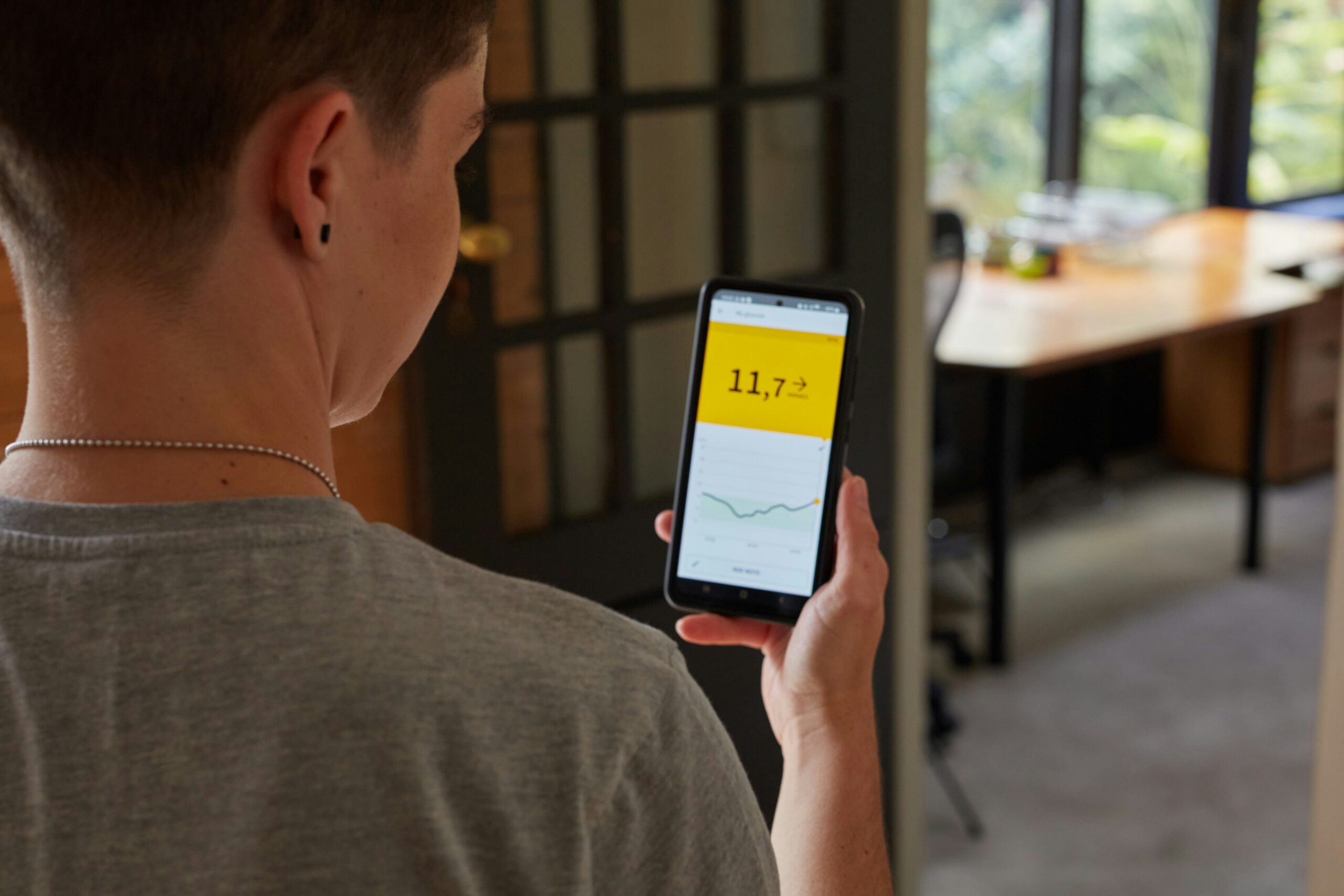“. . . insulin resistance can be picked up more than a decade before fasting glucose hits the diabetic range, meaning we are missing a huge window of opportunity to intervene” Casey Means, MD
I started digging into all things blood sugar after I had more and more people asking me about odd symptoms they were experiencing . . .
One friend reported internal “tremors” – felt like anxiety or stress that came on after a meal.
Another said his doc has ordered a battery of tests – 31 blood vials in total – to determine why he no longer had feeling in his feet?
All this while their doctors were telling them “you’re good to go” because their fasting glucose levels were in normal range . . . but were they?
I decided to dig in and went so far as to request a Continuous Glucose Monitor (CGM) from my doctor who thankfully honored my request.
CGM Shock!
Attaching one of these things to my arm and watching as one “low sugar”, high protein snack bar sent my blood sugar soaring, brought full awareness to how little we really know about how food impacts our body.
It isn’t just about the sugar. . .
About 38% of U.S. adults aged 18 and older (about 97.6 million people) are prediabetic.
And the frightening part – they don’t know it.
Why? Because doctors rarely order the one test that spots trouble early – the “Fasting Insulin” test.
As Dr. Casey Means says in her book Good Energy, insulin resistance can start up to 15 years before a diabetes diagnosis shows up in glucose tests.
So let’s fix this!
Insulin – The Clean-Up Crew
Insulin is a hormone that keeps blood sugar in check, moving excess sugar from your blood into cells.
Eat too much sugar (sodas, snacks, processed carbs) and insulin ramps up to compensate and keep blood sugar within normal range.
Over years, insulin climbs so high that your cells stop responding, sugar builds up in your blood, and you’ve arrived at what is known as insulin resistance.
Just like that, you’re diabetic.
By the time glucose tests catch it, the damage is already done.
Even worse, insulin acts as a storage hormone, turning the excess sugar into belly fat.
Why Aren’t Doctors Ordering It?
- Cost – Fasting Insulin tests aren’t always covered by insurance, unlike the cheaper glucose or Aic tests, so it may become an expense to you. (cost: $20–$100).
- Waiting for Symptoms: Conventional medicine often tests insulin only after diabetes is suspected, missing early warnings.
- Big Pharma Influence: Some say that the system profits more from treating diabetes than preventing it. I’ll let you make this call.
Optimal Levels
(A note about recommended ranges for blood work . . . Western medicine sets blood test levels by testing a large group and plotting results on a bell curve with the middle 95% considered “normal.” When you know that about 70% of our population have one or more chronic conditions, the “normal” ranges might not be so normal after all. The “optimal” ranges I list below are determined by Functional Medicine based on a population of healthy people.)
- Optimal Fasting Insulin: 2–5 µU/mL (microunits per milliliter).
- Concerning: Above 10 µU/mL may signal insulin resistance; above 15 is a red flag.
- Conventional Range: Often 5–25 µU/mL, but this is much too broad to catch early issues.
How to Get Tested
Ask your doctor for a fasting insulin test to catch diabetes risk early. Be firm, citing prevention and functional medicine. If they refuse, order it through a private lab (around $100). Don’t wait. You want to be able to intervene before it’s too late.
What to do if levels are high???
Cut sugars, processed carbs, and boxed foods. Eat real foods—veggies, meats, fish, nuts. If you’re serious, try the Whole30 program, a 30-day plan that has been shown to reverse diabetes by resetting insulin. (Warning: If you’re on diabetes meds, work with your doctor, as blood sugar can drop fast.)
Another step: Reduce stress and inflammation. (NAC, 600 mg/day on an empty stomach, per IFM) to support insulin balance.
As always . . . Live Young. Age Strong!
With love ♥
PS – If you want to go even deeper, another indicator you can check to see if your blood sugar might be in the danger zone is your triglyceride level. When we’re consuming too much sugar and carbs, the excess glucose is converted to triglycerides, a form of stored fat. Thus when triglycerides are high this is warning that too much sugar is coming in. The optimal range by Functional Medicine standards is less than 80 mg/dL.


Leave A Comment